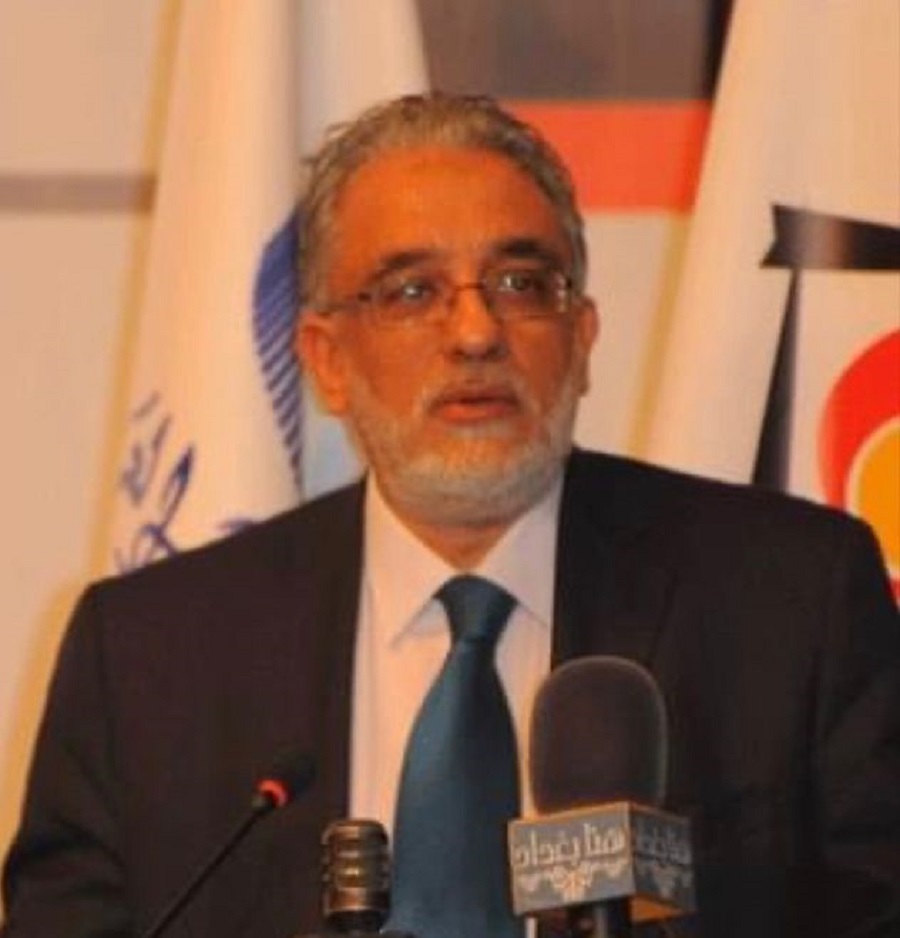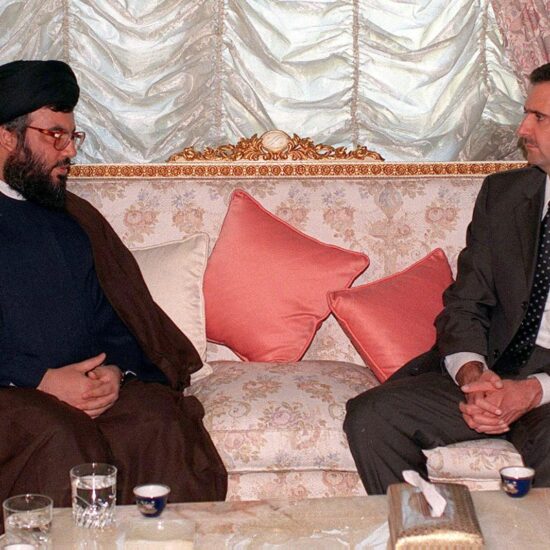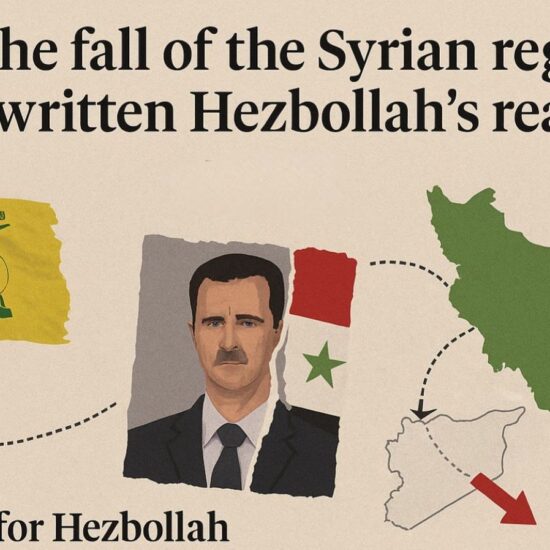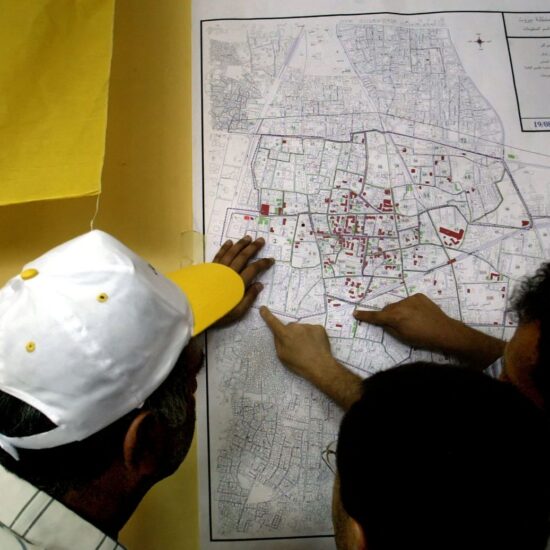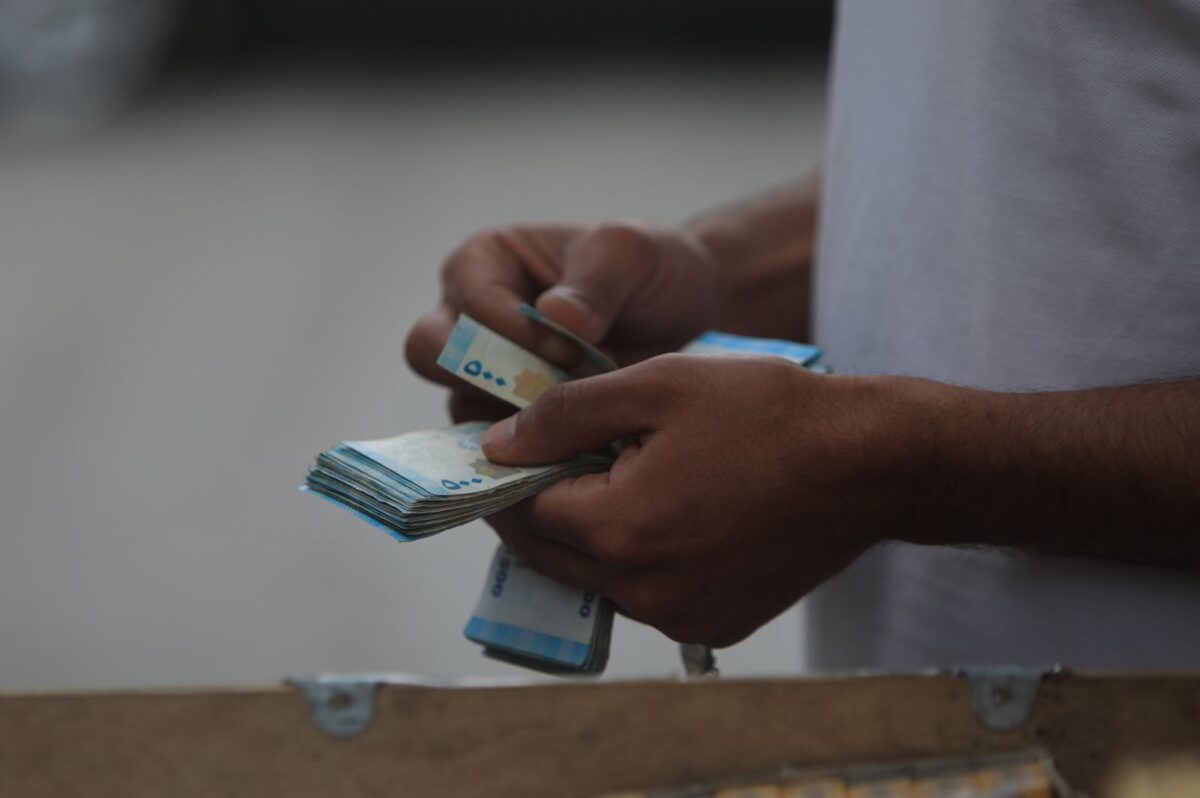
With the lifting of US sanctions, and considering Syria's potential to emerge as a regional economic model compared to Lebanon, several contrasts emerge. A first take is the announcement by the UAE of The Tartous Port development agreement which represents one of the most significant indicators of changing regional economic dynamics following sanctions relief. This agreement carries profound implications for regional trade flows. Historically, Lebanon's ports—particularly Beirut and Tripoli—served as primary gateways for regional commerce, including Syrian imports and exports. The development of Tartous as a modern deep-water port threatens to redirect significant trade volumes away from Lebanese facilities, potentially undermining one of Lebanon's few remaining economic advantages.
The question of whether Syria could emerge as a new economic model for the region following sanctions relief and reconstruction merits careful consideration as Lebanon struggles to regain its place under the sun of competitive countries. A scenario where Syria recovers while Lebanon continues to deteriorate would create unsustainable regional imbalances and likely trigger new waves of migration and instability for Lebanon. Syria’s near-total economic destruction paradoxically creates opportunity for comprehensive economic reimagining rather than incremental reform. With sanctions lifted, Syria could potentially access up to USD30 billion in reconstruction financing from international institutions and regional allies over the next decade. Lebanon, despite three international donor conferences since its financial collapse, has secured only limited assistance—approximately USD4.5 billion—largely due to lack of reform implementation.
With approximately 40% of housing stock destroyed, 50% of industrial capacity rendered non-operational, and infrastructure systems requiring wholesale replacement, Syria could potentially implement modern economic structures and technologies without the constraints of legacy systems.
When considering Syria’s potential to emerge as a regional economic model compared to Lebanon, several contrasts emerge. Lebanon’s economic crisis stems primarily from institutional failures and unsustainable fiscal policies rather than physical destruction. Lebanon retains advantages in human capital (with tertiary education rates of 40% versus Syria’s pre-war 15%), established service sectors, and international commercial relationships that survived its financial collapse.
Economic Figures: Syria and Lebanon at a Glance
Syria’s economy has contracted dramatically since the onset of civil war and sanctions. Before the conflict in 2010, Syria’s GDP stood at approximately USD60 billion, but by 2023, estimates placed it at merely USD15-18 billion—a contraction of over 70%. Inflation has reached catastrophic levels, with the Syrian pound losing more than 99% of its value against the US dollar since 2011. Official unemployment hovers around 50%, though unofficial estimates suggest it could be significantly higher in many regions. Government revenue has plummeted from approximately 25% of GDP pre-war to less than 10% currently. Within the first month after implementation, the Syrian pound lost approximately 30% of its value. By late 2022, the pound had depreciated further, trading at roughly 7,000 to the dollar on black markets compared to 47 to the dollar pre-war.
To note the Caesar Act effectively blocked fuel imports, creating severe shortages across Syria. Daily electricity supply in Damascus decreased from 15-20 hours pre-Caesar to as little as 2-4 hours by 2022. Fuel prices increased by over 400% in the two years following implementation. Syrian financial institutions became effectively cut off from the global financial system, with correspondent banking relationships falling by over 90%. This impeded even humanitarian transactions exempt from sanctions. Syrian businesspeople moved an estimated USD42 billion in assets to neighboring countries between 2020-2023.
The Caesar Act also substantially complicated Lebanon’s economic relationship with Syria. Lebanese banks, already facing their own crisis, completely severed remaining financial channels with Syrian counterparts due to fear of secondary sanctions. Cross-border trade, which had continued despite earlier sanctions, declined by approximately 70% according to Lebanese customs data.
Lebanon, while avoiding direct conflict, has experienced its own economic collapse. From a GDP of USD55 billion in 2018, the economy contracted to approximately USD21 billion by 2023—a 60% decline in just five years. The Lebanese pound has lost over 98% of its value since 2019, with inflation exceeding 200% in recent years. Unemployment has soared to approximately 40%, with youth unemployment estimated at over 60%. The banking sector crisis has frozen an estimated USD100 billion in deposits, effectively paralyzing the financial system that once represented Lebanon’s economic crown jewel.
Foreign direct investment tells an equally stark story. Syria, which attracted approximately USD1.5 billion annually in FDI before the conflict, saw this figure collapse to nearly zero under sanctions. Lebanon’s FDI, which peaked at USD4.4 billion in 2009, has similarly declined to less than USD200 million annually in recent years. Public debt presents another dimension of economic fragility. Lebanon’s public debt-to-GDP ratio has skyrocketed to over 170%, one of the highest in the world. Syria’s debt situation remains opaque due to limited international reporting, but estimates suggest a debt-to-GDP ratio exceeding 150%, with significant obligations to allies like Russia and Iran.
Potential pathways
Syria faces reconstruction with severely limited resources compared to the scale of rebuilding required (estimated at USD250-400 billion). The Syrian Ministry of Housing and Construction has already pioneered lower-cost housing units that reduce construction expenses by 40% compared to pre-war methods.
Also Syria’s energy infrastructure destruction presents an opportunity to rebuild with greater emphasis on renewable energy alongside traditional hydrocarbons. The country receives approximately 3,000 hours of sunshine annually and has significant untapped wind resources along its western mountains. Analysis by regional energy economists suggests Syria could feasibly achieve 30-40% renewable energy in its electricity generation mix by 2035—potentially establishing a more balanced energy model than petroleum-dependent economies elsewhere in the region.
Digital economy leapfrogging might be next, as Lebanon Telecommunication sector reforms have been stalling. Syria’s pre-war telecommunications infrastructure was among the region’s least developed, with internet penetration of only 22% in 2010. Reconstruction could emphasize digital infrastructure deployment, potentially allowing Syria to bypass certain stages of traditional economic development.
The Potential for American Investment in Syria
The lifting of sanctions, particularly the Caesar Act, would reopen the door for American investment in Syria—a prospect with profound implications for Syria’s economic recovery and regional economic positioning. Historically, U.S. companies maintained significant investments in Syria prior to the conflict and sanctions regime. In 2010, U.S. direct investment in Syria totaled approximately USD500 million, concentrated primarily in the energy, manufacturing, and tourism sectors. Major American energy companies, including ConocoPhillips and Marathon Oil, had active operations in Syrian oil and gas exploration and production. This model is still on hold for Lebanon as foreign investments and donors await the disarmament of Hezbollah network.
Industry analysis suggests that with American technological investment, Syria could increase its oil production from current levels of approximately 20,000 barrels per day to over 150,000 barrels daily within five years—generating potential annual revenue of USD3-4 billion at current prices. This would represent a substantial portion of Syria’s estimated USD15-18 billion current GDP.
U.S. engineering firms have unparalleled experience in post-conflict reconstruction. In Iraq, U.S. companies secured approximately USD8 billion in reconstruction contracts between 2003-2010. U.S. companies specializing in drought-resistant crops, efficient irrigation systems, and food processing could help restore Syria’s position as a regional agricultural exporter. Pre-war, Syria exported agricultural products worth approximately USD2 billion annually; with modernized techniques, this figure could potentially double within a decade. Economic data reveals that Russian companies have secured approximately USD2.5 billion in preferential reconstruction and resource extraction contracts in Syria since 2015, while Iranian firms have established dominant positions in telecommunications, power generation, and portions of the manufacturing sector. American investment would diversify Syria’s economic partnerships, potentially reducing dependency relationships that currently shape Syria’s economic and political trajectory.
The Significance of US-Gulf Deals and Their Impact on Syria
Recent diplomatic and economic realignments between the United States and Gulf Cooperation Council (GCC) states have profound implications for Syria’s economic prospects following sanctions relief. These evolving relationships form a critical backdrop to understanding potential Syrian economic recovery and regional positioning.
The Abraham Accords, initiated in 2020, have accelerated development of new regional trade corridors that bypass traditional routes through Syria. The UAE-Israel-Jordan economic corridor, backed by approximately USD10 billion in investment commitments, diminishes Syria’s historical role as a trade gateway between the Arab Gulf and the Mediterranean. Economic analysis suggests this could permanently reduce Syria’s transit trade potential by 15-20% even after full sanctions relief. GCC sovereign wealth funds have committed approximately USD50 billion to projects within the Abraham Accords framework between 2020-2023.. Saudi Arabia possesses an estimated USD650 billion in sovereign wealth fund assets that could potentially support Syrian reconstruction.
UAE-US Trade and Investment Relationships
The United Arab Emirates has emerged as the most economically engaged Gulf state with Syria, even during sanctions, but its actions remain constrained by its strategic partnership with the United States. The UAE has maintained trade ties with Syria despite sanctions, with Emirati-Syrian trade reaching approximately USD1 billion annually even during the sanctions period. However, this represents only about 15% of pre-conflict levels. UAE financial institutions have avoided significant engagement with Syria to maintain compliance with US sanctions and preserve their critical access to dollar clearing. With sanctions relief, UAE-Syria trade could potentially surge to USD3-5 billion annually based on pre-conflict patterns and current Emirati regional trade volumes. The UAE-US bilateral economic relationship—valued at approximately USD25 billion in annual trade—fundamentally outweighs potential UAE-Syria economic ties. UAE investments in Egyptian and Israeli Mediterranean ports (exceeding USD7 billion since 2015) have created competing facilities that diminish the potential competitive advantage of Syrian ports like Tartous and Latakia.
The Critical Tartous Port Agreement and Its Implications
The Tartous Port development agreement represents one of the most significant indicators of changing regional economic dynamics following sanctions relief. In this arrangement, similar to a Develop-Operate-Transfer (DOT) model, Russia’s management rights over Syria’s Tartous Port have been extended through a 49-year agreement. This agreement carries profound implications for regional trade flows. Historically, Lebanon’s ports—particularly Beirut and Tripoli—served as primary gateways for regional commerce, including Syrian imports and exports. The development of Tartous as a modern deep-water port threatens to redirect significant trade volumes away from Lebanese facilities, potentially undermining one of Lebanon’s few remaining economic advantages.
The Tartous agreement envisions approximately USD500 million in initial infrastructure investment, with projections suggesting capacity expansion from the current 4 million tons annually to over 15 million tons within a decade. This would transform Tartous into one of the eastern Mediterranean’s most significant ports—directly competing with Lebanese facilities that have suffered from underinvestment and, in Beirut’s case, catastrophic damage.
For Syria, the agreement guarantees a steady stream of port revenue—estimated at USD50-70 million annually—while positioning Syria to reclaim its historical role as a regional trade corridor. The industrial zones planned around the expanded port could generate an estimated 10,000-15,000 direct jobs and significantly more indirect employment.
Who Benefits Most: Comparative Analysis
In terms of immediate economic recovery potential, Syria appears positioned for more dramatic relative gains. Starting from a lower base after the devastating impact of war and sanctions, particularly the Caesar Act, Syria could potentially achieve double-digit growth rates in the initial reconstruction phase. With the removal of the Caesar Act’s stranglehold on cross-border transactions and foreign investment, international development organizations estimate that with full sanctions relief and international support, Syria’s economy could grow by 8-12% annually for several years, driven by reconstruction activity, returning refugees bringing capital, and renewed trade flows.
The lifting of the Caesar Act specifically would provide immediate relief in several critical areas such as the removal of oil and gas sector sanctions could potentially increase Syrian energy production from the current 20,000 barrels per day to over 100,000 within 2-3 years, generating an estimated USD1.5-2 billion in annual revenue at current prices. Financially, Syrian financial institutions could reestablish international connections, potentially unlocking USD10-15 billion in frozen assets held in foreign jurisdictions. Trade with neighbors could increase by 150-200% within the first year of sanctions relief, particularly in agricultural products, textiles, and construction materials.. Analysis of regional trade patterns suggests that up to 30% of current and potential future shipping volume through Lebanese ports could be diverted to an expanded, modernized Tartous facility. This represents a potential loss of USD150-200 million annually in direct and indirect economic activity for Lebanon.
Sectoral Winners and Losers
Sector-by-sector analysis reveals varied impacts across both economies. Syria’s construction sector could experience extraordinary growth—potentially 20-25% annually for several years—creating employment and stimulating related industries. Cement production, which has fallen from 6 million tons annually pre-war to less than 2 million currently, could rapidly expand, with multiplier effects throughout the economy.
Syria’s agricultural sector, historically producing exports valued at USD2-3 billion annually, could recover relatively quickly with renewed access to inputs, markets, and financing. The country’s textile industry, once employing over 300,000 workers and generating USD3 billion in economic activity, could see significant revival with renewed export access.
For Lebanon, the banking and financial services sector—once representing 8% of GDP—faces existential challenges regardless of regional developments. However, Lebanese firms with expertise in architecture, engineering, and project management could potentially capture 5-10% of Syria’s reconstruction contracts, valued collectively at USD1-2 billion annually, if political and financial obstacles can be overcome.
Lebanon’s tourism sector, historically contributing 20% to GDP, faces direct competition from a recovering Syrian tourism industry. Before the conflict, Syria attracted approximately 8.5 million tourists annually, compared to Lebanon’s peak of 2 million. With its more extensive historical sites and lower costs, post-sanctions Syria could divert significant tourism revenue from Lebanon.
The Path Forward: Cooperation or Competition?
Economic modeling suggests that a cooperative approach could increase both countries’ GDP by an additional 1-2% annually compared to competitive scenarios. This would represent approximately USD300-500 million in additional economic activity annually for each country within five years of implementation. However, achieving this cooperation faces significant obstacles. Political relations remain complex, with unresolved border disputes, refugee issues, and historical tensions.
Lebanon’s recovery potential appears more constrained by structural challenges, political dysfunction, and the unresolved banking crisis. While Lebanon retains advantages in human capital and certain service sectors, these strengths require a functioning financial system and political stability to translate into economic recovery—conditions that remain elusive.
With sanctions lifted, Syria could potentially access up to USD30 billion in reconstruction financing from international institutions and regional allies over the next decade. Lebanon, despite three international donor conferences since its financial collapse, has secured only limited assistance—approximately USD4.5 billion—largely due to lack of reform implementation.
Maan Barazy is an economist and founder and president of the National Council of Entrepreneurship and Innovation. He tweets @maanbarazy
The views in this story reflect those of the author alone and do not necessarily reflect the beliefs of NOW


